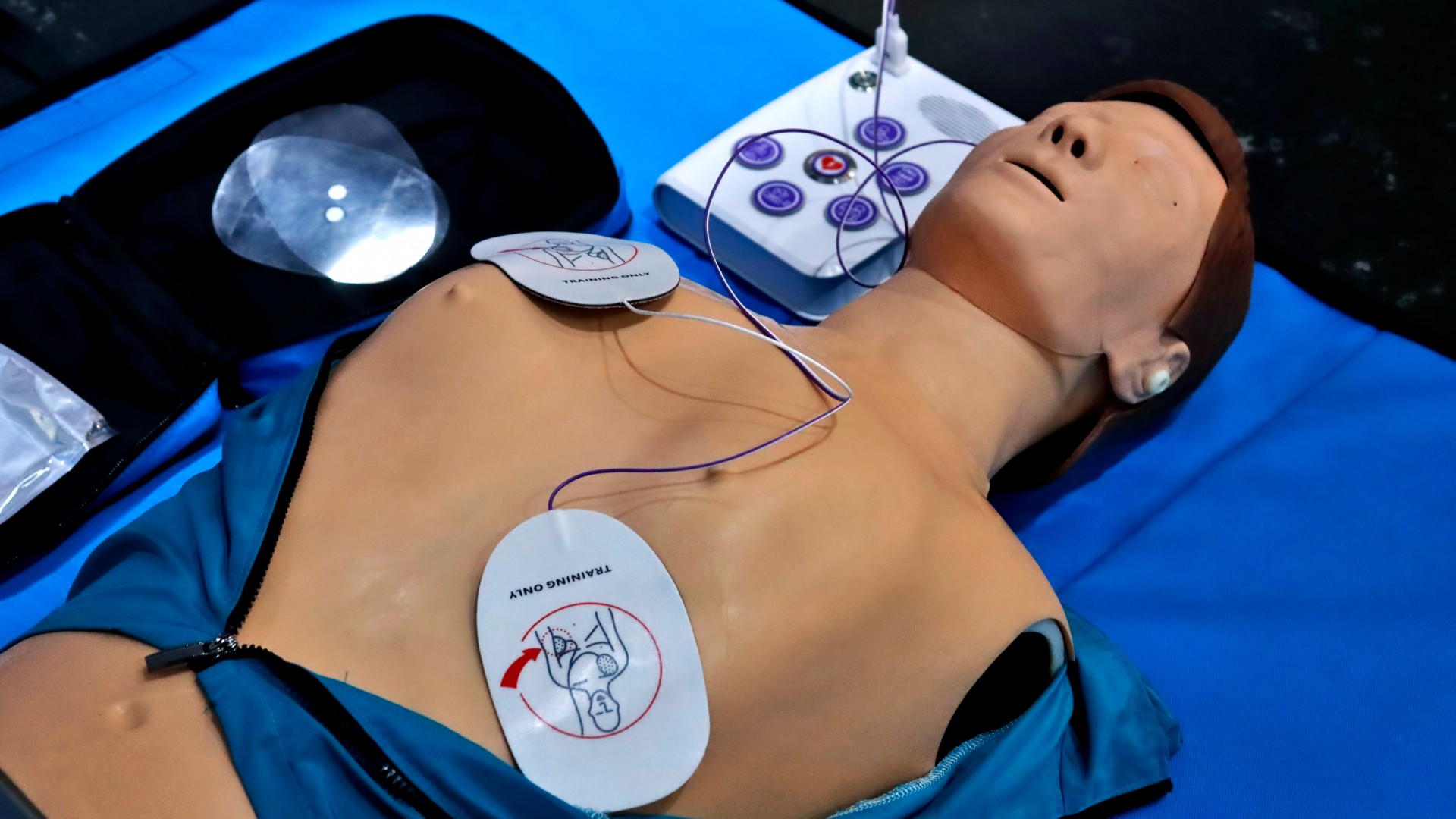
Contrary to popular belief, placing defibrillator pads on the front and back of the body rather than on the front and side may boost the chances of restoring a person's heartbeat, a new study hints.
The research looked at cases in which defibrillator pads were used following an out-of-hospital cardiac arrest. It suggests that back-and-front placement more than doubles the chance of success, compared to front-only placement.
The new study assessed the influence of pad placement on the survival outcomes of more than 250 patients with cardiac arrest. Cardiac arrests occur when the heart suddenly stops beating because of an electrical malfunction. (That's opposed to a heart attack, or myocardial infarction, which is caused by impaired blood circulation to the heart.)
"The key is, you want energy that goes from one pad to the other through the heart," Dr. Mohamud Daya, study co-author and a professor of emergency medicine at the Oregon Health and Science University, said in a statement. While the research provides early hints that pad placement makes a difference, it has limitations and thus bears confirmation in more extensive studies.
Related: Heart attacks fell dramatically during the pandemic — and they're still dropping
Each year in the U.S., more than 350,000 people experience cardiac arrest outside of a hospital, and less than 10% of them survive.
Two of the most treatable causes of cardiac arrest are ventricular fibrillation (an irregular heartbeat) and pulseless ventricular tachycardia (when the heart beats too fast to adequately pump blood around the body). In these cases, defibrillation, which delivers an electrical current to the heart via two pads that are placed on the body, can restore a normal heartbeat and increase survival rates — if it's performed quickly enough.
Defibrillator pads are usually placed on the chest — one on the upper-right side below the collarbone and the other on the left side underneath the armpit. However, the pads can also "sandwich" the body, with one placed on the front of the body and one on the back. Until now, medical professionals have generally assumed that both pad placements are equally effective at treating cardiac arrests, the study authors noted.
However, in their new study, the researchers looked at 255 adults in Oregon who'd had an out-of-hospital cardiac arrest caused by either ventricular fibrillation or pulseless ventricular tachycardia. The 192 male and 63 female patients, who had an average age of 66, each received defibrillation from emergency medical services: 158 with front-and-back pad placement and 97 with front-and-side placement.
Overall, the researchers found that patients with front-and-back placement were 2.64 times more likely to experience return of spontaneous circulation (ROSC) — when the heart starts beating again — than those whose pads were placed only on their chest. They described their findings in a paper published Sept. 9 in the journal JAMA Network Open.
The findings hint that placing the pads at the front and back improves the flow of electrical current to the heart by coming at the organ from either side, the authors say.
However, the new study was fairly small in size and only observational, meaning the researchers looked retrospectively at events that already happened. They weren't testing each method side-by-side in a well-controlled study, so they cannot prove that pad placement itself actually influences defibrillation outcomes. It may be that other factors — such as a person's age or sex — made the difference. To rule these out, a gold-standard clinical trial is needed to test both pad placements.
The researchers also didn't find any statistically significant difference between the groups in terms of several other critical outcomes of a cardiac arrest — such as survival rate. The two groups' survival rates both before hospital admission and at point of discharge were very similar. It's unclear exactly why this would be the case, so that would need to be clarified before this study is used to change clinical practice.
Front-and-back positioning is also not always possible. For, instance if someone has overweight or is positioned in such a way that it is difficult to move them, it may not be feasible.
"It can be hard to roll people," Daya said. "Emergency medical responders can often do it, but the lay public may not be able to move a person."
This article is for informational purposes only and is not meant to offer medical advice.
Ever wonder why some people build muscle more easily than others or why freckles come out in the sun? Send us your questions about how the human body works to community@livescience.com with the subject line "Health Desk Q," and you may see your question answered on the website!







